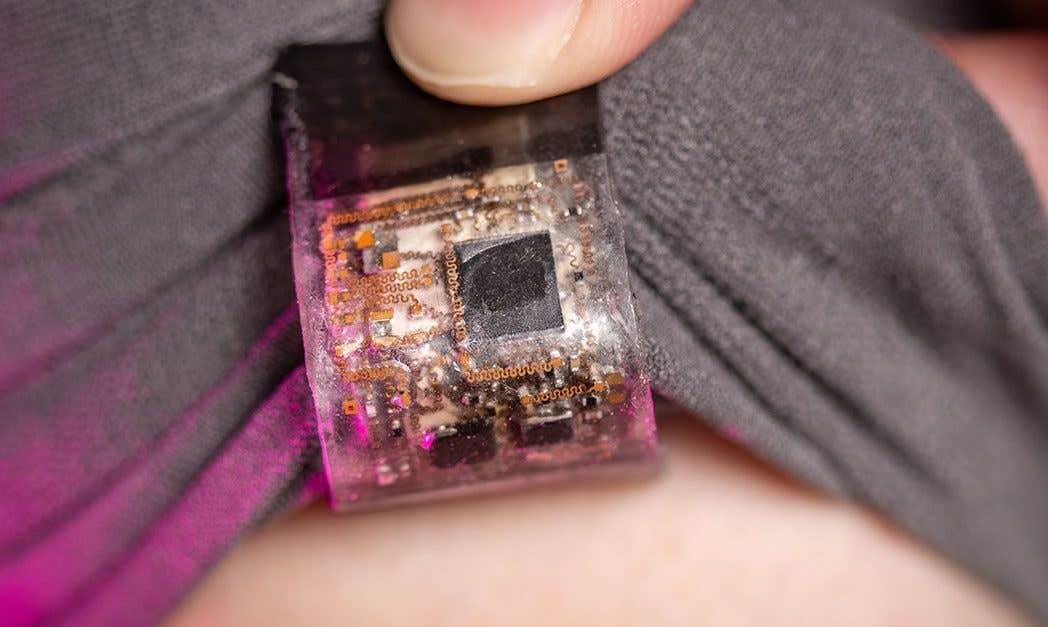Lifechanging drug naturally converts ‘bad’ fat to ‘good’ fat
Researchers used a novel drug discovery technologies to uncover a metabolite that converts white fat cells to brown fat cells.

[Aug. 10, 2023: Carolos Guijas, Scripps Research Institute]
“Metabolism” describes the body’s chemical changes that create the necessary materials for growth and overall health. (CREDIT: Creative Commons)
“Metabolism” describes the body’s chemical changes that create the necessary materials for growth and overall health. Metabolites are the substances made and used during these metabolic processes—or, as a new discovery out of Scripps Research and its drug development arm, Calibr, indicates, they could also be potent molecules for treating severe diseases.
In a study from Metabolites, the researchers used novel drug discovery technologies to uncover a metabolite that converts white fat cells (“bad” fat) to brown fat (“good” fat) cells. This discovery offers a potential way of addressing metabolic conditions like obesity, type 2 diabetes and cardiovascular disease. Even more, it speaks to the promise of using this creative drug discovery method to identify countless other potential therapeutics.
“The reason many types of molecules don’t go to market is because of toxicity,” says co-senior author Gary Siuzdak, PhD, the senior director of the Scripps Center for Metabolomics and professor of Chemistry, Molecular and Computational Biology at Scripps Research. “With our technology, we can pull out endogenous metabolites—meaning the ones that the body makes on its own—that can have the same impact as a drug with less side effects. The potential of this approach is even evidenced by the FDA’s recent approval of Relyvrio, the combination of two endogenous metabolites for the treatment of amyotrophic lateral sclerosis (ALS).”
Metabolic diseases are often caused by an imbalance in energy homeostasis—in other words, when the body takes in more energy than it expends. This is why certain therapeutic approaches have centered around converting white fat cells (known as adipocytes) into brown fat cells. White adipocytes store excess energy and can eventually result in metabolic diseases like obesity, while brown adipocytes dissolve this stored energy into heat—ultimately increasing the body’s energy expenditure and helping bring it back into balance.
Related Stories
To uncover a therapy that could stimulate the production of brown adipocytes, the researchers searched through Calibr’s ReFRAME drug-repurposing collection—a library of 14,000 known drug compounds that have been approved by the FDA for other diseases or have been extensively tested for human safety. Using high-throughput screening—an automated drug discovery method for searching through large pools of information—the scientists scanned ReFRAME for a drug with these specific capabilities.
This is how they uncovered zafirlukast, an FDA-approved drug used for treating asthma. Through a set of cell culture experiments, they found zafirlukast could turn adipocyte precursor cells (known as preadipocytes) into predominantly brown adipocytes, as well as convert white adipocytes into brown adipocytes.
While an encouraging find, zafirlukast is toxic when administered at higher doses, and it wasn’t entirely clear how zafirlukast was converting the fat cells. This is when the researchers partnered with Siuzdak and his team of metabolite experts.
High-throughput screening reveals an inducer of brown fat differentiation. (CREDIT: Scripps Research Institute)
“We needed to use additional tools to break down the chemicals in zafirlukast’s mechanism,” says Kristen Johnson, PhD, co-senior author of the paper and a director in Translational Drug Discovery Research at Calibr. “Framed another way, could we find a metabolite that was providing the same functional effect that zafirlukast was, but without the side effects?”
Siuzdak and his team designed a novel set of experiments, known as drug-initiated activity metabolomics (DIAM) screening, to help answer Johnson’s question. DIAM uses technologies such as liquid chromatography (a tool that separates components in a mixture) and mass spectrometry (an analytical technique that separates particles by weight and charge) to pool through thousands of molecules and identify specific metabolites. In this case, the researchers were searching through adipose tissue for metabolites that could lead to brown adipocyte cell production.
Zafirlukast induces metabolically active brown adipocytes. (a) Quantification of the dose–response effect of zafirlukast in brown adipocyte differentiation based on HCI data. (CREDIT: Scripps Research Institute)
After reducing 30,000 metabolic features to just 17 metabolites, they found myristoylglycine—an endogenous metabolite that prompted the creation of brown adipocytes, without harming the cell. Of the thousands of metabolic features measured in the analysis, only myristoylglycine had this special characteristic, even among nearly structurally identical metabolites.
“Identifying myristoylglycine among the thousands of other molecules speaks to the power of Siuzdak’s approach and these technologies,” adds Johnson. “Our findings illustrate what happens when an analytical chemistry team and a drug discovery group closely collaborate with each other.”
Drug-Initiated Activity Metabolomics (DIAM) screening allows for the discovery of myristoylglycine, which recapitulates brown adipocyte differentiation. (a) Comparative dose–response effect of zafirlukast and montelukast in brown adipocyte differentiation based on HCI data. (CREDIT: Scripps Research Institute)
In addition to Siuzdak and Johnson, authors of the study, “Drug-Initiated Activity Metabolomics Identifies Myristoylglycine as a Potent Endogenous Metabolite for Human Brown Fat Differentiation” include Carolos Guijas, J. Rafael Montenegro-Burke, Xavier Domingo-Almenara, Bernard P. Kok and Enrique Saez of Scripps Research; and Andrew To, Zaida Alipio-Gloria and Nicole H. Alvarez of Calibr.
This research was partially funded by the National Institutes of Health and the NIH Cloud Credits Model Pilot.
For more science and technology stories check out our New Discoveries section at The Brighter Side of News.
Note: Materials provided above by Scripps Research Institute. Content may be edited for style and length.
Like these kind of feel good stories? Get the Brighter Side of News' newsletter.



